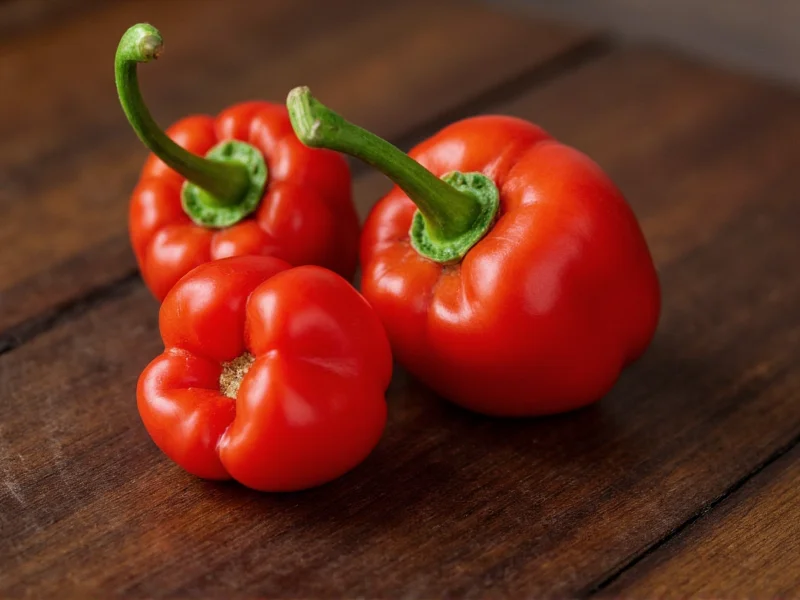The Scoville scale remains the definitive measurement for chili pepper heat, and understanding where Scotch Bonnet peppers fall on this spectrum is essential for both culinary enthusiasts and casual cooks. These vibrant, lantern-shaped peppers deliver not just intense heat but also a distinctive fruity flavor profile that has made them indispensable in Caribbean cuisine for centuries.
Understanding the Scoville Scale Measurement System
Developed in 1912 by American pharmacist Wilbur Scoville, the Scoville Organoleptic Test originally measured chili heat through human taste panels diluting pepper extract until the heat became undetectable. The number of dilutions required determined the Scoville Heat Units (SHU). While modern high-performance liquid chromatography (HPLC) now provides more precise measurements of capsaicinoids (the compounds responsible for heat), the Scoville scale remains the standard reference for consumers.
Today's Scoville ratings represent the concentration of capsaicinoids converted to Scoville units. This scientific approach maintains consistency with historical measurements while eliminating subjectivity from human testing. When examining scoville scale measurement for scotch bonnet pepper varieties, it's important to recognize that environmental factors significantly influence final heat levels.
Scotch Bonnet Pepper Characteristics and Origins
Native to the Caribbean islands, particularly Jamaica, Haiti, and Trinidad, Scotch Bonnet peppers (Capsicum chinense) earned their name from their distinctive shape resembling a Scottish tam o' shanter hat. These peppers typically measure 1.5-2 inches in diameter and change color as they mature from green to vibrant shades of red, orange, yellow, or even chocolate brown.
Beyond their notable heat, Scotch Bonnets offer a complex flavor profile with distinct tropical fruit notes—often described as having hints of apricot, apple, or cherry. This unique combination of intense heat and fruity sweetness makes them irreplaceable in traditional jerk seasoning, hot sauces, and Caribbean stews. Understanding scoville heat scale for chili peppers becomes particularly valuable when working with these versatile ingredients.
Precise Heat Range of Scotch Bonnet Peppers
While often compared to habaneros, Scotch Bonnet peppers generally register slightly higher on the scoville units of scotch bonnet pepper scale. Their heat range spans from 100,000 to 350,000 SHU, though specific varieties and growing conditions create considerable variation:
| Pepper Variety | Scoville Heat Units (SHU) | Heat Comparison |
|---|---|---|
| Scotch Bonnet (average) | 100,000-350,000 | 12-140 times hotter than jalapeño |
| Habanero (average) | 100,000-350,000 | 12-140 times hotter than jalapeño |
| Jamaican Hot House | 250,000-350,000 | Among hottest Scotch Bonnet varieties |
| Trinidad Perfume | 100,000-200,000 | Milder Scotch Bonnet variety |
| Jalapeño (reference) | 2,500-8,000 | Baseline for comparison |
Several factors influence the actual heat level of individual Scotch Bonnet peppers:
- Soil conditions: Peppers grown in nutrient-poor soil often develop higher capsaicin concentrations
- Water stress: Moderate drought conditions can increase heat levels
- Ripeness: Fully mature red peppers typically register hotter than green or yellow varieties
- Genetic variation: Different cultivars naturally produce varying heat levels
Scotch Bonnet vs Habanero: Understanding the Differences
While Scotch Bonnets and habaneros share the same species (Capsicum chinense) and overlapping Scoville ratings, several key distinctions exist. The scotch bonnet vs habanero heat comparison reveals that Scotch Bonnets generally have a slightly higher average heat level, though individual peppers may vary significantly.
Flavor profiles differ noticeably—Scotch Bonnets typically offer more pronounced fruity, sweet notes compared to habaneros' citrusy flavor. Their physical shapes also distinguish them: Scotch Bonnets have a distinctive "bonnet" or rounded shape with a wavy texture, while habaneros tend to be more oval with smoother skin.
Culinary applications vary by region. Scotch Bonnets dominate Caribbean cooking, particularly in Jamaican jerk recipes, while habaneros feature more prominently in Mexican and Central American cuisines. When substituting between these peppers, understanding scoville rating of scotch bonnet peppers helps maintain appropriate heat balance in recipes.
Practical Applications and Safety Considerations
Working with Scotch Bonnet peppers requires proper handling techniques due to their intense heat. Always wear gloves when cutting these peppers and avoid touching your face. The capsaicin oils can cause severe irritation to eyes and sensitive skin. If you experience burning, dairy products like milk or yogurt provide more effective relief than water, as capsaicin is fat-soluble.
In cooking, Scotch Bonnets shine in small quantities due to their potency. Chefs often add whole peppers to stews and remove them before serving to infuse flavor without overwhelming heat. For those wondering how hot are scotch bonnet peppers in practical terms, even 1/4 of a pepper can significantly heat a four-person dish.
When substituting Scotch Bonnets in recipes, consider these alternatives based on heat preference:
- Milder option: Serrano peppers (10,000-23,000 SHU) for about 1/10 the heat
- Closest match: Habanero peppers (similar heat range with slightly different flavor)
- Hotter option: Ghost peppers (855,000-1,041,427 SHU) for extreme heat
Measuring Pepper Heat at Home
While professional Scoville testing requires laboratory equipment, home cooks can make relative heat comparisons through careful tasting. Start with tiny amounts of pepper, diluted in dairy or starch, and gradually increase until you determine your personal tolerance. Remember that heat perception varies significantly between individuals due to genetic differences in capsaicin receptor density.
For recipe consistency, consider removing seeds and membranes—the placenta where most capsaicin concentrates—when a milder flavor profile is desired. This technique allows you to retain the distinctive fruity flavor of Scotch Bonnets while reducing their scoville scale measurement for scotch bonnet pepper impact in your dish.











 浙公网安备
33010002000092号
浙公网安备
33010002000092号 浙B2-20120091-4
浙B2-20120091-4